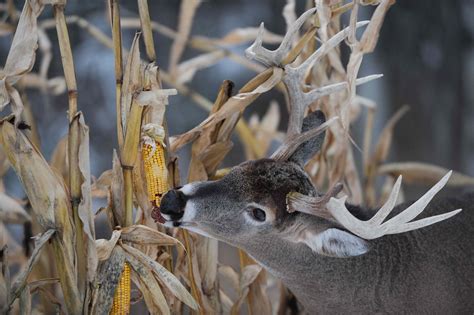Deer Hunting: The Corn Arrival Mystery Solved
The rustling leaves, the crisp autumn air, the thrill of the hunt – deer hunting season is a time-honored tradition for many. But for seasoned hunters, there's a yearly mystery that unfolds alongside the changing foliage: the seemingly magical appearance of deer in cornfields just as the crop begins to ripen. This isn't magic, of course, but a fascinating interplay of natural behaviors and agricultural practices that we'll unravel in this article. Understanding this phenomenon is key to improving your hunting strategy and maximizing your chances of success.
Why are Deer Drawn to Cornfields?
The simple answer? Corn is incredibly nutritious and readily available. Deer are highly adaptable herbivores with a diverse diet, but they're naturally drawn to high-energy food sources, especially during the fall when they need to build up fat reserves for the harsh winter months. Corn provides a readily accessible, calorie-rich meal, unlike the more scattered and challenging-to-find food sources they might consume earlier in the year. The dense stalks also offer excellent cover, providing safety from predators and allowing deer to feel secure while they feed.
When Does the Cornfield Migration Occur?
The timing of deer migrating to cornfields depends heavily on the planting and maturation schedules of the corn crop. Typically, you'll start to see increased activity in cornfields as the corn begins to dent, meaning the kernels start to lose their milky interior and become slightly harder. This usually occurs in late summer to early fall, coinciding with the peak hunting season in many areas. This is the sweet spot for the deer – the corn is still relatively juicy and palatable, but also substantial enough to provide significant caloric intake.
What Other Factors Attract Deer to Cornfields?
While the corn itself is the primary attractant, other factors play a role in shaping deer behavior around these agricultural hotspots.
Access to Water:
Proximity to water sources is crucial for deer. Cornfields near streams, ponds, or even ditches are significantly more attractive than isolated fields. Hunters should look for such locations when scouting.
Cover and Concealment:
The dense stalks of corn provide excellent cover, offering protection from predators and allowing deer to feed with a greater sense of security. This is especially true for does with fawns, who prioritize safety above all else.
Agricultural Practices:
Harvesting schedules play a major role. Fields harvested early may see a surge in deer activity as neighboring fields remain untouched. Conversely, fields harvested late may offer less attraction as the corn is gone, and the surrounding areas may already be depleted.
How Does This Impact My Hunting Strategy?
Understanding the corn arrival mystery significantly improves your hunting success rate. Here's how:
- Scouting: Focus your scouting efforts on cornfields during the late summer and early fall. Look for areas with standing corn, near water sources, and offering good cover.
- Stand Placement: Position your tree stands or blinds strategically at the edges of cornfields or along travel routes leading to and from the field. Consider prevailing winds to mask your scent.
- Scent Control: Deer have an incredible sense of smell, so maintain strict scent control measures.
- Timing: Hunt during dawn and dusk, when deer activity is typically at its highest.
What Happens After Harvest?
Once the corn harvest is complete, deer will shift their feeding habits again, dispersing to other food sources like acorns, berries, and other agricultural leftovers. However, understanding their cornfield reliance helps you predict their post-harvest movements, allowing for continued hunting success even after the fields are empty.
Frequently Asked Questions (PAA)
Q: Do deer only eat corn in the fall?
No, while corn is a significant food source in the fall, deer have a varied diet throughout the year, including grasses, forbs, browse, and other vegetation. However, the high energy density of corn makes it particularly attractive during the fall when deer are preparing for winter.
Q: Are all cornfields equally attractive to deer?
No. Proximity to water, cover, and the stage of corn maturity all impact attractiveness. Fields near water and providing cover tend to draw higher concentrations of deer.
Q: Can I plant corn to attract deer to my hunting land?
While planting corn can attract deer, it requires significant space and resources. More effective methods include creating food plots with a mix of plants that are attractive to deer throughout the year.
Understanding the allure of corn for deer is a crucial piece of the puzzle for successful hunting. By factoring this natural behavior into your strategy, you'll be well-equipped to enjoy a fruitful and rewarding hunting season.

